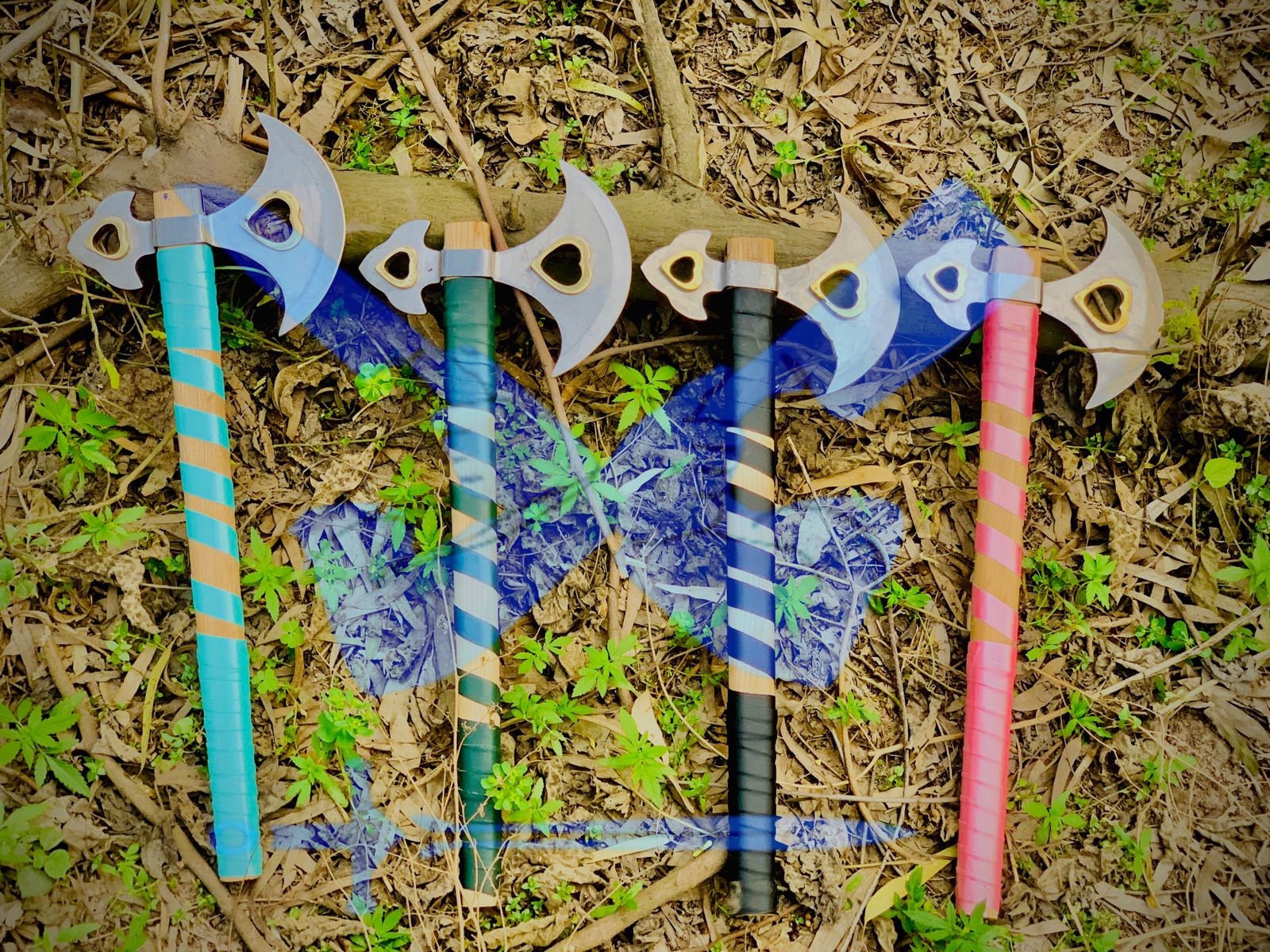Highlights









Description
Mountaineer's axe with heart-shaped holes and Ash-wood reinforced shaft. Unique and Antique Ancient Vintage Article of Japanese Museum 14th century.
A Unique and Antique Ancient Article of Japanese Museum Mountaineer's axe with Bronze forged heart-shaped holes and Ash-wood shaft. Japan, Murom chi period, 14th century Axe.
Colors :
Available in 7 different colors see more images for the colors
SIZE AND MEASUREMENTS :
Total Length : 25 Inches
Blade Head : 8 inches
blade width : 11 inches
MATERIAL USED :
Carbon steel for Head (Sharp Cutting Edge).
ASH-WOOD for Handle.
Dark Green Leather Wrapping on the Handle.
Leather cover for protection of Head of Axe and the Blade.
HISTORY :
Mountaineer's axe also known as ritual Axe, with heart-shaped holes and Ash wood reinforced shaft. Japan, Muromachi period, 14th century .
we modified a little bit to this Article to make it looks more beautiful . A ritual axe is a symbol of virtue, which was supposed to cut off the worldly temptations of Buddhist monks who were under training on mountains. Usually, the monk who walks at the head of the party is holding a ritual axe. These ritual axes are called "Nyu016bbu-no-ono" (mountaineering axe) as monks used to have real axes to make way when they join the training on the mountains. This rather thin axe is made of forged iron. The cutting edge of the blade is curved whereas the head of the blade is made in the shape of a flower. There are two heart-shaped open-work decorations; the hearts are rimmed. The handle is made of wood, and both with heart-shaped decorations rendered in open-work. Judging from the manufacturing technique, this axe should have been made sometime between the Nanboku-chu014d and Muromachi periods. This axe, as well as a similar axe kept in the Yamato Bunka-kan Museum, is an excellent work of art. Although it is a ritual implement, it has several characteristics of a tool for practical use. A ritual tool with practical characteristics indeed fits to the mountaineering priests. This axe had been kept in Jinshu014d-ji temple in Shiga prefecture.
Masterpieces of Nara National Museum.